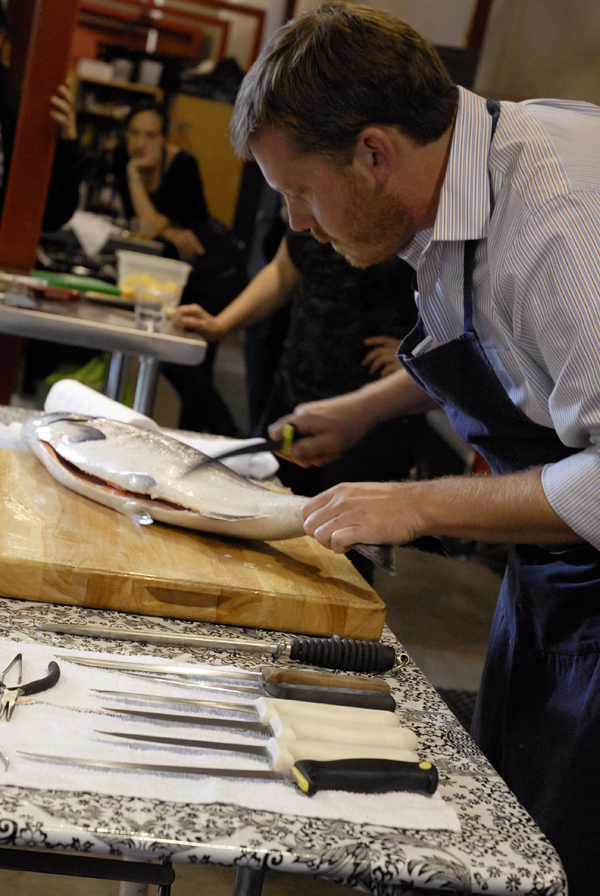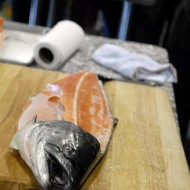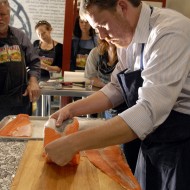Admit it: When faced with fish, you buy fillets. But why? Is it the face? The fins? Fear of scales? Fear of bones? Well, get over it. Now that our local sport and commercial salmon fishing season is open, you might very well find yourself tempted--or treated--to a whole fish, and when that happens, it's handy to know how to handle it.

It's also much more economical, and sustainable, to feed yourself nose-to-fin on a whole wild fish. Maria Finn, Bay Area Bites writer, former commercial salmon fisherwoman, and author of The Whole Fish: How Adventurous Eating of Seafood Can Make You Healthier, Sexier, and Help Save the Ocean recently teamed up with chef Neil Davidson of Mission Gastroclub and the Whip Out food truck to teach a hands-on class in scaling, filleting, preserving, and smoking whole fish at home.

The class, presented by the Center for Urban Education about Sustainable Agriculture (CUESA) and Urban Kitchen SF, was held from 5:30 to 7:30pm last Thursday in CUESA's outdoor kitchen, under the porticos of the Ferry Building. It's not the most comfortable place for a cooking class; it's outside, after all, and instructions can be hard to hear over traffic noise as cars, trucks, and motorcycles screech and toot their way along The Embarcadero just yards away.
Still, it's hard not to be entranced by the massive, silvery whole salmon laid out in front of Davidson. This is the creme de la creme of Pacific Coast salmon: a wild king, fresh from the ocean just north of Sonoma County. Of course, as Finn points out, tasty, healthful dishes can be made from all five of our local salmon types, including pink, chum, silver, and sockeye. But for superlative texture and flavor, the king is king.

Davidson goes over the fish, telling us what to look for when choosing a fish: eyes that look clear and full, still sitting high in the socket, not sunken into the head; no cuts or slashes on the body; fins that are still in good shape. This fish has already been gutted, so there's just a neat cavity where the guts would have been. Picking up a thin, flexible, slightly curved filleting knife, Davidson quickly scrapes off the scales using the back (dull side) of the knife. This is a job to do outside, if possible, since the small, mica-like scales will pop off and fly everywhere.

Once the fish is scaled, Davidson crunches his knife through the spine just behind the head, then slides it across the broad flanks of the fish along the ribs and spine all way to the tail, effortlessly freeing the whole long stretch of flesh from the bones. It looks easy only because he's been doing it professionally for years, from cooking school in Portland, OR to stints at The French Laundry and Ad Hoc. But, as he points out, the knife should be doing most of the work for you; what he's doing is mainly guiding it over the bones, following the structure of the fish. Angle the knife slightly downward, so that it won't cut up and into the flesh.

Filleting whole salmon side by Chef Neil Davidson. Video by Stephanie Rosenbaum



















